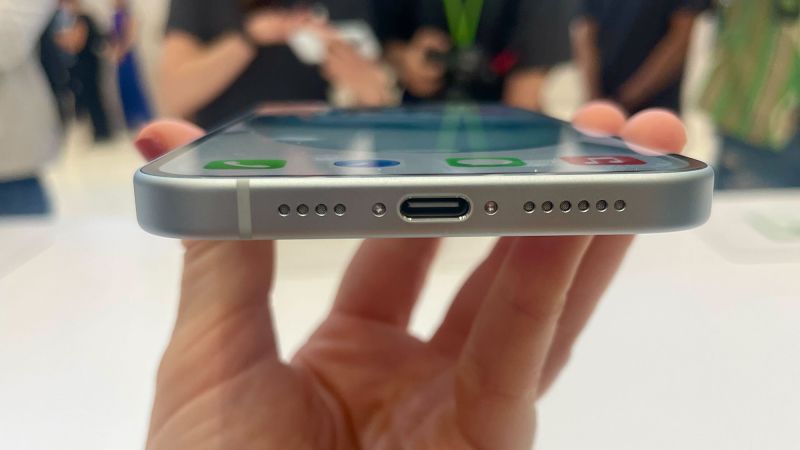
Unveiling iPhone 15: Everything You Must Know About This Revolutionary Device

Apple's highly anticipated iPhone 15 lineup has finally arrived, causing a frenzy among eager customers worldwide With sleek design enhancements and a significant move towards universal charging, these next-generation smartphones are set to revolutionize the mobile industry
The iPhone 15 series by Apple was released on Friday to eager customers in China, Europe, and the US. Long queues formed outside stores as people sought to be among the first to purchase the company's latest smartphones.
Prior to the launch, analysts from companies like Wedbush Securities noted that iPhone 15 pre-orders were surpassing their initial expectations. The premium iPhone 15 Pro models, particularly the Pro Max, experienced high demand. As a result, delivery and shipment times for several Pro models have been pushed to late October or mid-November.
Apple's sales declined for the third straight quarter as the latest iPhones were introduced. In the last quarter, iPhone revenue amounted to $39.7 billion, representing a year-over-year decline of approximately 2%, as consumers opt for less frequent device upgrades.
Wedbush estimates reveal that around 250 million iPhones have not been upgraded in over four years. With advancements in the processor and camera system, coupled with discounts offered by mobile carriers, it is highly probable that people will finally decide to upgrade their devices this year.
The iPhone 15 Pro is priced at $1,099 while the iPhone 15 Pro Max starts at $1,199. Apple's more affordable options, the iPhone 15 and iPhone 15 Plus, come with price tags of $799 and $899, respectively. Here's a detailed overview of the latest features:
iPhone 15 lineup is packed with subtle design changes
The newest iterations of iPhones come with subtle yet notable design enhancements. Firstly, the iPhone 15 Pro and iPhone 15 Pro Max showcase a titanium enclosure, resulting in a sleeker and more slender design compared to previous models.
The premium models of the iPhone 15, such as the iPhone 15 Pro Max, have undergone several design changes. These changes include a more advanced 48 megapixel main camera with a larger sensor and a new telephoto lens that allows for 5x optical zoom. Additionally, the new design features contoured edges and a customizable Action button, which adds extra functionality to the ring/silence button, such as starting a voice memo or writing a note. The Pro line is available in four colors: white, black, natural, and blue.
On the other hand, the basic iPhone 15 phones have also received updates. They now have improved image stabilization for capturing photos and videos, 2x optimization, and updated portraits with more vibrant color and better performance in low-light conditions. These phones also include the "Dynamic Island" toolhome, which replaces the previously existing notch on the iPhone 14 Pro and allows for easy access to alerts, notifications, and other controls.
Apple shows off the new iPhone 15 Pro after its introduction on the Apple campus Tuesday in Cupertino, California.
The iPhone 15 lineup features an Ultra-Wideband chip that enables a range of new functionalities, including one that simplifies locating friends who share their location in crowded areas.
The iPhone 15 comes in 5 colors (white, black, pink, green and yellow) and in two sizes: A 6.1-inch screen for the iPhone 15 and 6.7 inches for iPhone 15 Pro.
A milestone step toward universal charging
The iPhone 15 models will introduce a major change as they will now adopt the use of a USB-C charging cord, marking the end of an 11-year era with Apple's exclusive Lightning charging cable. With this update, Apple customers will be able to conveniently utilize the same USB-C chargers to power their iPhones, iPads, and Mac computers, eliminating the need to search for the appropriate charger for each device. Apple has emphasized that the inclusion of a dedicated USB-C controller will enable data transfer speeds on the iPhone 15 Pro that are up to 20 times faster than those achieved with USB-2 technology.
The new iPhone 15 models will now use a USB-C charging cord, ending an 11-year run with Apple's proprietary lightning charging cable.
Less than a year after the European Union's approval of legislation mandating USB-C charging support by 2024 for various small devices including smartphones, tablets, digital cameras, and portable speakers, Samantha Kelly from CNN reports that renowned tech giant Apple is making the switch. This pioneering law intends to minimize the burden on consumers by reducing the number of chargers and cables they have to deal with when buying new devices, as well as enabling seamless compatibility between devices and chargers from different manufacturers.
Apple is offering a USB-C Lightning adapter at a price of $29 to facilitate the connection of existing Lightning accessories to USB-C enabled iPhones or iPads for charging or data sharing purposes. The company has informed CNN that iPhone users can recycle their old Lightning chargers through its in-store recycling program.















